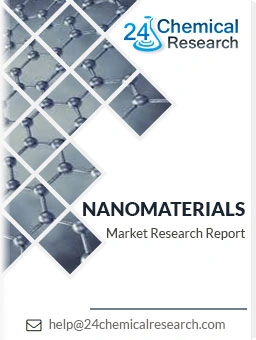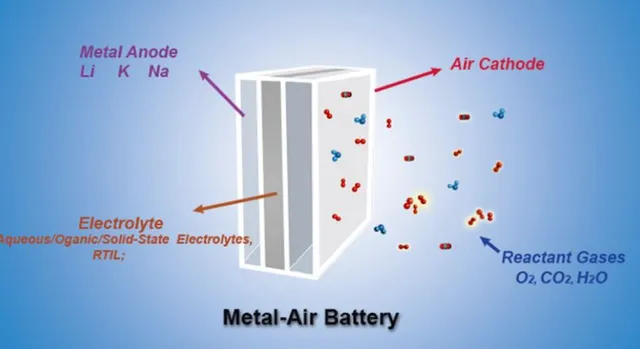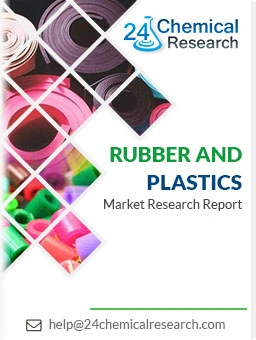Quantum Dot Solar Cells Market : Size, Trends, and Growth Analysis 2032
The Quantum Dot Solar Cells Market is poised for significant technological evolution as it ushers in the next era of solar energy harvesting. With a market size valued at US$ 4,890.33 Million in 2024 and a projected CAGR of 4.5% from 2025 to 2032, quantum dot (QD) solar technologies are increasingly recognized for their ability to overcome limitations of traditional silicon-based cells.
Quantum dot solar cells harness the unique optical and electronic properties of semiconductor nanocrystals—typically 2 to 10 nanometers in size—offering tunable absorption, improved energy conversion efficiency, and the potential for flexible, lightweight panels. This nanostructured innovation is driving significant research and development activity in the renewable energy sector, promising to reshape both consumer and industrial photovoltaic applications.
Market Segmentation Insights
The market is categorized by Product Type, Material, and Application, each reflecting unique advancements and commercial potential across global photovoltaic sectors.
By Product Type:
Quantum Dot Solar Cells: These cells use layers of quantum dots directly in photovoltaic structures. Their tunable bandgap enables absorption across a broader spectrum of sunlight, enhancing solar efficiency beyond conventional limits.
Quantum Dot Hybrid Solar Cells: Hybrid cells combine quantum dots with organic or inorganic materials to boost charge separation and transport, striking a balance between cost, flexibility, and performance.
Quantum Dot Nanowire Solar Cells: These integrate quantum dots into nanowire structures, enhancing light trapping and carrier collection. Their high surface-to-volume ratio supports improved energy harvesting, particularly in compact or flexible installations.
By Material:
Quantum dot solar cell performance varies based on the core material used in dot fabrication:
Cadmium Selenide (CdSe): Commonly used for its strong absorption in the visible spectrum, though concerns remain about cadmium toxicity and environmental impact.
Lead Sulfide (PbS) and Lead Selenide (PbSe): Offer strong infrared absorption, suitable for multi-junction solar cell designs, but also raise toxicity issues requiring encapsulation strategies.
Indium Phosphide (InP): A non-toxic alternative under active development, providing a safer option without compromising performance.
Perovskite Quantum Dots: A fast-emerging material with potential for ultra-high efficiency and solution-based fabrication. Stability remains a challenge under real-world conditions.
Silicon Quantum Dots: Combine traditional silicon infrastructure with quantum dot enhancements, supporting compatibility with existing photovoltaic ecosystems.
By Application:
Quantum dot solar cells are increasingly being adopted across a range of use cases:
Consumer Electronics: Integration into mobile devices, wearables, and portable solar chargers due to the flexibility and semi-transparency of quantum dot films.
Building Integrated Photovoltaics (BIPV): Quantum dot technology enables semi-transparent solar windows and façade-integrated panels, expanding renewable energy generation in urban infrastructure.
Automotive: Used in solar roofs and windows for electric vehicles (EVs), enhancing vehicle range and reducing grid dependence.
Aerospace and Defense: Lightweight quantum dot solar materials are being tested for powering drones, satellites, and remote sensing devices.
Agrivoltaics: Quantum dots can be tuned to allow certain light wavelengths to pass through while converting others to electricity, supporting dual use in greenhouses.
Off-grid Energy Systems: In rural or remote regions, quantum dot solar cells offer a lightweight, durable solution for powering small-scale off-grid applications.
Growth Drivers
Several macro and technological trends are converging to drive growth in the quantum dot solar cells market:
Advanced Efficiency Potential: Traditional solar cells are nearing their physical efficiency limits. Quantum dot solar cells, however, promise efficiencies over 30% through mechanisms like multiple exciton generation (MEG).
Flexibility and Transparency: Their ability to be deposited on flexible substrates or integrated into transparent surfaces gives them an edge for unconventional installations.
Scalable, Low-Cost Manufacturing: Quantum dots can be synthesized through solution processing techniques, such as spin-coating or inkjet printing, lowering production costs and enabling roll-to-roll fabrication.
Climate Policy and Green Energy Targets: Government initiatives and climate commitments are pushing demand for next-generation renewable energy technologies that offer improved efficiency and smaller carbon footprints.
Collaborative R&D Ecosystem: Increased collaboration among academic institutions, national laboratories, and private companies is fast-tracking material development and scale-up.
Regional Market Dynamics
North America: The U.S. is a leader in quantum dot research, backed by strong federal funding and presence of leading startups. Growing BIPV and EV sectors support commercial adoption.
Europe: Driven by EU’s Green Deal and aggressive solar targets, European nations are investing in clean nanotechnologies and sustainable materials for next-generation photovoltaics.
Asia-Pacific: China, Japan, and South Korea are spearheading large-scale production and pilot installations of QD solar cells. The region benefits from strong semiconductor and nanomaterials infrastructure.
Middle East & Africa: Interest is growing due to the region’s high solar irradiance. Quantum dot solar panels are being explored for use in both luxury buildings and rural electrification.
Latin America: Emerging markets like Brazil and Chile are investing in pilot solar farms using advanced materials to improve grid efficiency and rural power access.
Competitive Landscape
The Quantum Dot Solar Cells Market is still in an early commercialization stage, but key players are investing heavily in R&D and strategic alliances to unlock scalable applications.
Key Market Participants:
Nanosys Inc.: A global leader in quantum dot materials with a growing portfolio in optoelectronic applications, including solar energy.
Quantum Materials Corporation: Specializes in the large-scale, low-cost production of quantum dots for solar cells and display applications.
Nanoco Group plc: UK-based firm producing cadmium-free quantum dots, with partnerships for solar technology development and licensing.
UbiQD Inc.: Innovator in luminescent quantum dot windows and agricultural films, exploring solar-integrated smart surfaces.
Ocean NanoTech: Focuses on functionalized quantum dots and nanomaterials for photovoltaics and biological imaging.
These companies are actively pursuing patent filings, production scaling, and regulatory certifications to establish their presence as quantum dot solar cell adoption grows across industrial and consumer sectors.
Browse more Report:
Healthcare Bioconvergence Market
Grid Scale Stationary Battery Storage Market
Green Ammonia Market
Endoscopic Ultrasonography Market
Drones for Emergency Responders Market
https://analystviewmarketinsights.com/reports/report-highlight-quantum-dot-solar-cells-marketQuantum Dot Solar Cells Market : Size, Trends, and Growth Analysis 2032
The Quantum Dot Solar Cells Market is poised for significant technological evolution as it ushers in the next era of solar energy harvesting. With a market size valued at US$ 4,890.33 Million in 2024 and a projected CAGR of 4.5% from 2025 to 2032, quantum dot (QD) solar technologies are increasingly recognized for their ability to overcome limitations of traditional silicon-based cells.
Quantum dot solar cells harness the unique optical and electronic properties of semiconductor nanocrystals—typically 2 to 10 nanometers in size—offering tunable absorption, improved energy conversion efficiency, and the potential for flexible, lightweight panels. This nanostructured innovation is driving significant research and development activity in the renewable energy sector, promising to reshape both consumer and industrial photovoltaic applications.
Market Segmentation Insights
The market is categorized by Product Type, Material, and Application, each reflecting unique advancements and commercial potential across global photovoltaic sectors.
By Product Type:
Quantum Dot Solar Cells: These cells use layers of quantum dots directly in photovoltaic structures. Their tunable bandgap enables absorption across a broader spectrum of sunlight, enhancing solar efficiency beyond conventional limits.
Quantum Dot Hybrid Solar Cells: Hybrid cells combine quantum dots with organic or inorganic materials to boost charge separation and transport, striking a balance between cost, flexibility, and performance.
Quantum Dot Nanowire Solar Cells: These integrate quantum dots into nanowire structures, enhancing light trapping and carrier collection. Their high surface-to-volume ratio supports improved energy harvesting, particularly in compact or flexible installations.
By Material:
Quantum dot solar cell performance varies based on the core material used in dot fabrication:
Cadmium Selenide (CdSe): Commonly used for its strong absorption in the visible spectrum, though concerns remain about cadmium toxicity and environmental impact.
Lead Sulfide (PbS) and Lead Selenide (PbSe): Offer strong infrared absorption, suitable for multi-junction solar cell designs, but also raise toxicity issues requiring encapsulation strategies.
Indium Phosphide (InP): A non-toxic alternative under active development, providing a safer option without compromising performance.
Perovskite Quantum Dots: A fast-emerging material with potential for ultra-high efficiency and solution-based fabrication. Stability remains a challenge under real-world conditions.
Silicon Quantum Dots: Combine traditional silicon infrastructure with quantum dot enhancements, supporting compatibility with existing photovoltaic ecosystems.
By Application:
Quantum dot solar cells are increasingly being adopted across a range of use cases:
Consumer Electronics: Integration into mobile devices, wearables, and portable solar chargers due to the flexibility and semi-transparency of quantum dot films.
Building Integrated Photovoltaics (BIPV): Quantum dot technology enables semi-transparent solar windows and façade-integrated panels, expanding renewable energy generation in urban infrastructure.
Automotive: Used in solar roofs and windows for electric vehicles (EVs), enhancing vehicle range and reducing grid dependence.
Aerospace and Defense: Lightweight quantum dot solar materials are being tested for powering drones, satellites, and remote sensing devices.
Agrivoltaics: Quantum dots can be tuned to allow certain light wavelengths to pass through while converting others to electricity, supporting dual use in greenhouses.
Off-grid Energy Systems: In rural or remote regions, quantum dot solar cells offer a lightweight, durable solution for powering small-scale off-grid applications.
Growth Drivers
Several macro and technological trends are converging to drive growth in the quantum dot solar cells market:
Advanced Efficiency Potential: Traditional solar cells are nearing their physical efficiency limits. Quantum dot solar cells, however, promise efficiencies over 30% through mechanisms like multiple exciton generation (MEG).
Flexibility and Transparency: Their ability to be deposited on flexible substrates or integrated into transparent surfaces gives them an edge for unconventional installations.
Scalable, Low-Cost Manufacturing: Quantum dots can be synthesized through solution processing techniques, such as spin-coating or inkjet printing, lowering production costs and enabling roll-to-roll fabrication.
Climate Policy and Green Energy Targets: Government initiatives and climate commitments are pushing demand for next-generation renewable energy technologies that offer improved efficiency and smaller carbon footprints.
Collaborative R&D Ecosystem: Increased collaboration among academic institutions, national laboratories, and private companies is fast-tracking material development and scale-up.
Regional Market Dynamics
North America: The U.S. is a leader in quantum dot research, backed by strong federal funding and presence of leading startups. Growing BIPV and EV sectors support commercial adoption.
Europe: Driven by EU’s Green Deal and aggressive solar targets, European nations are investing in clean nanotechnologies and sustainable materials for next-generation photovoltaics.
Asia-Pacific: China, Japan, and South Korea are spearheading large-scale production and pilot installations of QD solar cells. The region benefits from strong semiconductor and nanomaterials infrastructure.
Middle East & Africa: Interest is growing due to the region’s high solar irradiance. Quantum dot solar panels are being explored for use in both luxury buildings and rural electrification.
Latin America: Emerging markets like Brazil and Chile are investing in pilot solar farms using advanced materials to improve grid efficiency and rural power access.
Competitive Landscape
The Quantum Dot Solar Cells Market is still in an early commercialization stage, but key players are investing heavily in R&D and strategic alliances to unlock scalable applications.
Key Market Participants:
Nanosys Inc.: A global leader in quantum dot materials with a growing portfolio in optoelectronic applications, including solar energy.
Quantum Materials Corporation: Specializes in the large-scale, low-cost production of quantum dots for solar cells and display applications.
Nanoco Group plc: UK-based firm producing cadmium-free quantum dots, with partnerships for solar technology development and licensing.
UbiQD Inc.: Innovator in luminescent quantum dot windows and agricultural films, exploring solar-integrated smart surfaces.
Ocean NanoTech: Focuses on functionalized quantum dots and nanomaterials for photovoltaics and biological imaging.
These companies are actively pursuing patent filings, production scaling, and regulatory certifications to establish their presence as quantum dot solar cell adoption grows across industrial and consumer sectors.
Browse more Report:
Healthcare Bioconvergence Market
Grid Scale Stationary Battery Storage Market
Green Ammonia Market
Endoscopic Ultrasonography Market
Drones for Emergency Responders Market
https://analystviewmarketinsights.com/reports/report-highlight-quantum-dot-solar-cells-market










